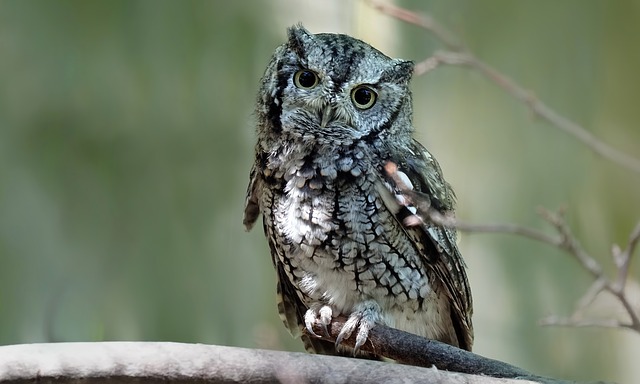Table of Contents
The bird in question, made famous by Hedwig in the Harry Potter series, is definitely a magnificent creature. Indeed, with their bright eyes and ability to rotate their heads almost completely, owls have captivated movie fans and biologists alike.
From the earliest days, these mysterious and intelligent birds have triggered interesting questions among ornithologists and bird watchers and while most riddles have been solved, people still wonder about certain things.
One common question among kids, in particular, is whether owls hibernate during winter. In this article, we answer that question and much more!
Do Owls Hibernate?
Hibernation, as we know, is a seasonal practice that commonly occurs during winter. During this time, some animals rely on this state of minimal activity and metabolic depression to survive the harsh weather and food scarcity. In the case of owls, the answer to this question can be quite complex.
Different species classified as owls adhere to different types of habitats and adaptations. Some scientists suggest that owls tend to hibernate during winter for survival when their prey is scarce. On the other hand, some believe that owls either adapt or migrate rather than hibernate.
How Owls Adapt and Migrate
Snowy Owls, as their name suggests, are as white as snow. This particular species of owl does not hibernate. They are well conditioned to harsh weather conditions, especially those associated with winter. They show both adaptability and migrating tendencies.
During winter, their habitat, known as the arctic tundra, records a drastic fall in temperature. Even then, they adapt and fly during the morning, unlike most other owls that prefer the night. Snowy Owls are covered with thick plumage, which helps them maintain their body heat and survive the cold.
As for migration, in extreme years, Snowy Owls migrate from north to southern terrain, where the weather is considerably warmer. Scientists have recorded large-scale migrations by Snowy Owls due to global warming and a lack of sufficient food.
Winter Adaptation by Barn Owls
Barn Owls are found in warmer climates. Compared to Snowy Owls, they are poorly insulated and require extra energy during winter to maintain their body heat. Their mortality rate during the winter is often high. However, rather than resort to hibernation, they use coping strategies to survive the winter.
Their survival depends on the abundance of prey. They, too (like Snowy Owls), sometimes hunt during the day, which happens more regularly when the owl is struggling to find enough food during the night.
They also change their nesting locations during winter to places, sometimes barns, where they can find shelter and warmth.
Owl Mortality in Winter
Some winters can cause a high mortality rate among owls. They succumb to the harsh weather, and lately, the conditions have worsened due to climate change. The species of owls that do not hibernate suffer more at the hands of the cold weather.
There have been reports of large-scale deaths. The major reason is due to starvation. It’s a pity that owls do not hibernate as they would not need to eat at all during this time. But unfortunately, they often struggle to find food during the colder seasons and some, failing to hunt, just don’t survive.
Whether it be the Great Horned, Great Gray Owls, or Snowy Owls, the death rates have increased over the past few years. Starvation happens especially when rain causes the snow to freeze even more. Since owls prey on rodents that live underground, this makes finding food a challenge.
Furthermore, increasing industrialization and deforestation are driving animals and birds away from their habitat and this also affects their welfare.
Can We Help Owls?
Owls are slowly becoming endangered due to the inaction and brutality of humans. They are threatened by habitat loss, lack of protection, and poaching. Governments must enforce protection laws as well as act vigilantly. A special habitat area must be demarcated not only for owls but also for other endangered species. If the present condition prevails, it won’t be long before owls are driven towards extinction.
At root levels, people can feed owls suffering from starvation. Bird watchers can also work together to help owls and improve their lot.
Also, the breeding of endangered species of owls will help to increase their numbers.
Conclusion
Wildlife is suffering immensely at the hand of humans. However, when winter rolls around, things get even tougher. Some lucky species catch a break with their ability to hibernate but owls are not among this crowd. To survive, they migrate or do their best to find a new territory where there is more food and warmth – but they don’t always succeed, leading to higher mortality rates during this season.
Birdwatchers can help by feeding and protecting these birds and official breeding programs can also ensure that owls are not driven to extinction in the near future.

